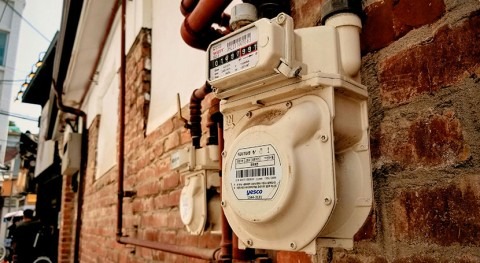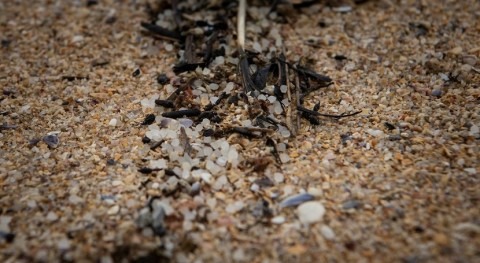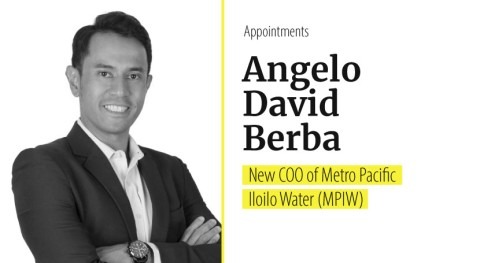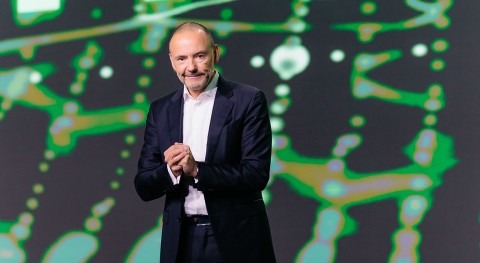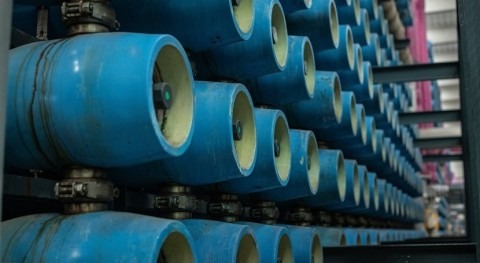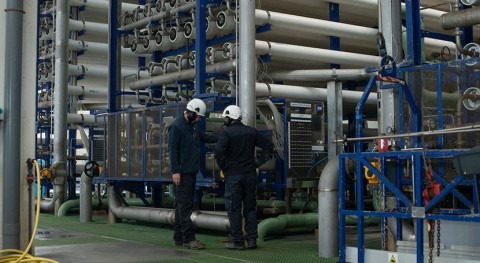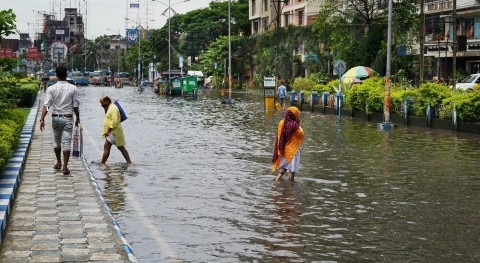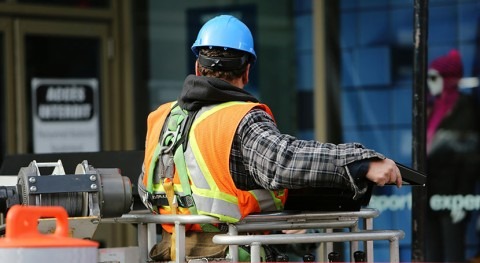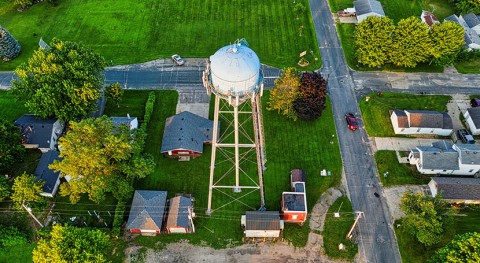Smart Water Magazine greets 2024 with a stronger emphasis on the topics that we believe hold the greatest interest for our readers, and therefore we are introducing a new format for our newsletters. Every week we will send three thematic newsletters, focusing on Water and wastewater treatment (on Tuesdays), Digital (on Wednesdays) and Utilities & Water security (on Thursdays). Our weekly newsletters will continue to be sent, as usual, every Monday.
In our thematic newsletters, you will find current news, interviews and in-depth stories covering a variety of topics. Concerning water and wastewater treatment, water sector stakeholders will be able to monitor how the industry is evolving to adapt to changing conditions, implement sustainable practices, and contribute to the long-term resilience of water resources.
Water and wastewater treatment: most-read stories in 2023
As we leave 2023 behind, we highlight some of the most widely read articles spanning several domains crucial to water management: water and wastewater treatment but also desalination and drinking water quality. In the realm of water and wastewater treatment, advancements in sustainable technologies and strategies took centre stage: from dealing with PFAS and other contaminants in drinking water, to maximizing process efficiency in order to cut costs and carbon emissions. All of it by leveraging technologies as diverse as heat exchangers and digital twins.
Desalination is a field of transformative breakthroughs, with novel techniques promising increased efficiency and reduced energy consumption. These advances and contracts to develop new desalination facilities across the globe offered a glimpse into a future where desalination is likely to play a pivotal role in meeting escalating freshwater demands. As water scarcity threatens different regions, other promising novel approaches such as atmospheric water generation also captivated our readers’ attention, as a means to produce drinking water under specific circumstances.
The following are the 10 most-read stories related to water and wastewater treatment, desalination and drinking water quality.
Algeria is investing in seawater desalination plants to increase water availability. To improve the efficiency of these plants, Filtralite® filter media can help reduce the amount of water taken from the environment and the cost of running the plant. The replacement of sand with Filtralite® at the Beni Saf desalination plant has led to reduced production losses due to frequent backwashing, less water needed for backwashing, and optimised operating costs.
European governments are implementing stricter regulations to limit exposure to PFAS, synthetic chemicals found in many everyday products that have been linked to health problems. ECT2’s technology uses a combination of adsorption and ion exchange to dramatically reduce the waste and costs associated with PFAS remediation.
Heat exchangers are important in wastewater treatment systems to maximize process and energy efficiency. With different types of heat exchangers available, the choice depends on factors like the nature of the wastewater, viscosity, and solids content. The use of heat exchangers in wastewater treatment can help achieve net zero carbon emissions and reduce environmental impact.
A partnership of water companies and industry providers, led by Severn Trent Water, is working on a project called the “Net Zero Hub” to remove direct process emissions from wastewater treatment. Cutting-edge technology, including Siemens gPROMS digital twin, will be used to reduce and remove CO2, CH4, and N2O emissions. The work is a world first, providing a blueprint for net-zero wastewater treatment.
Veolia will lead a consortium to construct the state-of-the-art desalination plant Mirfa 2 in Abu Dhabi. The plant will use reverse osmosis to produce 550,000 cubic meters of drinking water per day, a technology that reduces energy consumption by 80% compared to older thermal desalination methods. The project, worth around €300 million, is part of the UAE's efforts to increase desalination capacity while reducing energy use and supporting their carbon neutrality goals.
Palintest is placing its Kemio electrochemical testing technology at the forefront of its expansion in Europe. The Kemio range includes tests for critical disinfection parameters and heavy metals within minutes, as well as the only EPA-approved portable method for lead testing. Palintests’ products align with the EU's Drinking Water Directive, which aims for zero pollution and high water quality standards.
ACCIONA has reached a major milestone in the construction of the Al Khobar 2 desalination plant in Saudi Arabia. The plant is now producing its full capacity of 630,000 cubic meters of drinking water per day, enough to meet the needs of 3 million people. This is one of the largest desalination plants in the country and uses energy-efficient reverse osmosis technology.
The U.S. Environmental Protection Agency (EPA) has revealed that 26 million people in hundreds of communities have PFAS in their drinking water. This is based on the EPA's Fifth Unregulated Contaminant Monitoring Rule, which requires water utilities across the nation to test drinking water for 29 different PFAS compounds. The EPA's data confirms the presence of PFAS in 431 water systems at levels above reporting limits.
Saudi Arabia's Water and Environment Technologies Company (WETICO) has been awarded two contracts to build seawater desalination plants in El Taref and Bejaia, Algeria. The plants will have a capacity of 300,000 cubic meters per day and will be part of Algeria's desalination programme. The projects are funded by the Algerian government and commissioned by the state-owned Sonatrach Group.
Khalifa University of Science and Technology, Eshara Water, Azelio AB, and Masdar City have launched the world's first atmospheric water generation system (AWG). The system uses solar energy and electrical thermal energy storage to produce drinking water straight from the air. It can supply up to 1,000 litres per day per unit, with plans to increase capacity in the future. This technology is beneficial for remote or off-grid regions that need clean electricity and water.
Issues to watch for in 2024: what can you expect to read about in our Water and wastewater treatment newsletter?
In 2024, the water and wastewater treatment sector faces a myriad of challenges and opportunities. New and more stringent regulations are reshaping the industry landscape, notably in the U.S. on PFAS and lead in drinking water, and in Europe, with the implementation of the revised drinking water directive and the proposed revision to the urban wastewater treatment directive. Also to keep an eye on are the forward-thinking new regulations on direct potable reuse in California, paving the way for an approach to expand water reuse, already successfully implemented in other jurisdictions.
Embracing unconventional sources of water is vital for resilience in the face of evolving environmental challenges and increasing demands. We will follow the evolution and expansion of resources such as desalination and wastewater reuse. Resource recovery from wastewater and brine effluent, circular economy practices, and the pursuit of carbon neutrality are also becoming pivotal aspects of sustainable water management and reflect the industry's commitment to environmental stewardship.
Operating costs remain a critical consideration in water and wastewater treatment, driving the need for new developments to achieve energy and chemical savings. Meanwhile, the imperative to address water efficiency and ageing infrastructure underscores the importance of non-revenue water (NRW) reduction and leak detection initiatives.
Contaminants of emerging concern, such as microplastics, PFAS, and antimicrobial resistance, are gaining increased attention due to their potential impact on water quality and public health. Challenges such as dealing with extreme weather events or pollution from combined sewer overflows (CSOs) require novel approaches. Innovation will play a pivotal role in helping address these concerns, not only in advancing water treatment technologies, but also in the digital transformation of the entire water sector, offering unprecedented opportunities for efficiency, monitoring, and smart decision-making.
We will tell you about this, and much more. However, to focus more on the digital realm, we will pass the baton to our new Digital newsletter, which will cover in depth the transformation of the water industry as it continues to embrace intelligent solutions.
We invite you to subscribe to our new thematic newsletters here.





